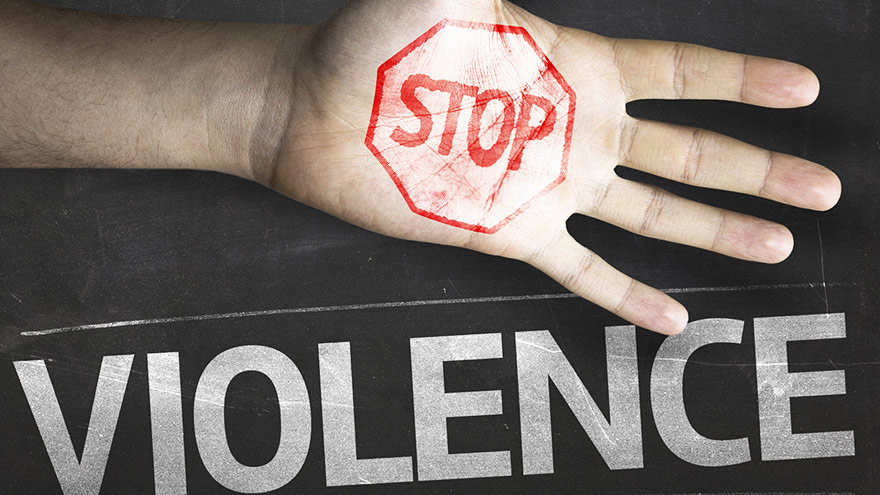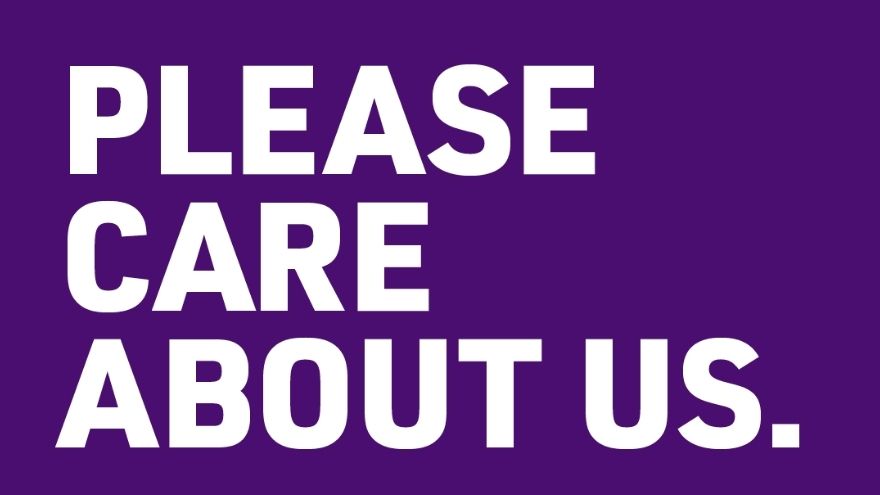Search
Results for 'forms'
Clear-
Workplace Violence: Protecting Healthcare Workers
Over the past year, the safety of healthcare providers has received more public attention than ever before. Throughout the COVID-19 pandemic – and particularly in the early days – the public learned about the vital role of personal protective equipment (PPE) and other important processes that keep healthcare workers safe and healthy. However, people may be surprised to learn that germs and viruses are just one of the many risks that healthcare professionals face every day. Many people are fortunate enough not to have to worry for their physical and mental wellbeing when they go to work. Unfortunately, this is not the case for countless healthcare workers across the nation, for whom workplace violence is a daily concern. According to the American Hospital Association, healthcare workers are four times more likely to experience serious workplace violence as people in other industries. This is particularly troubling knowing that healthcare workers have dedicated their careers to serving others, putting their communities first day in and day out. Responding to the Challenge of Workplace Violence At Renown, we have no tolerance for abuse against our employees. As an organization, we have several systems in place to support and protect our staff. During staff orientation, we provide classes to prepare employees to prevent and de-escalate verbal or physical abuse. We also offer ongoing education to train our staff to respond to violent situations. If an incident does occur, our violence prevention task force reviews incidents and ensures the impacted employees receive resources and counseling to help them process what has occurred. As a leader, I am continually impressed by our team’s desire and ability to support one another. However, I know that it is my responsibility to protect our team. No one should have to face harassment or abuse – in any form – in their workplace, and I think about the risks our employees face every day. I believe so much in this cause that I volunteer on the American Hospital Association’s Hospitals Against Violence steering committee, which works to understand the causes behind violence against healthcare workers and develops tools and processes to prevent these incidents from occurring.
Read More About Workplace Violence: Protecting Healthcare Workers
-
Ask the Expert: What is Scoliosis?
Posture is important, but for those children diagnosed with scoliosis (spinal curvature) it can be a difficult issue. The Washoe County School District Student Health Services Department screens 7th grade students for scoliosis as growth spurts often reveal the condition and, if diagnosed early, scoliosis can stop progressing. We asked Michael Elliott, MD, head of the Department of Pediatric Orthopedics and Scoliosis to answer some frequently asked questions about scoliosis. What is scoliosis? There are many types of scoliosis: early onset (occurs before age 10), congenital scoliosis is when the bones of the spine do not form correctly, neuromuscular scoliosis which is due to children’s neurologic and muscle disease, and the most common is Adolescent Idiopathic Scoliosis. The term “idiopathic “ means the exact cause is unknown, although we do know it runs in families. This type of scoliosis occurs in 2-3 percent of adolescents and is mainly seen during their growth spurt. This is why middle school screenings are recommended. Both genders get scoliosis but girls are 8 times more likely to have their curves progress and become larger. What are the signs that my child may have scoliosis? A few signs for parents to watch for are: One shoulder might be higher than the other. One leg may seem longer. A hip may be higher or look more prominent. The waist may not look the same from side to side (asymmetry). The trunk or rib cage may be more prominent on one side or shifted. When they bend forward they may have a bump on their back. How is scoliosis diagnosed? It can be noticed by a pediatrician at a physical, school screening nurse, PE teacher or parents. Once the curve is suspected the child is usually referred to a pediatric orthopedic surgeon scoliosis expertise. At the initial visit the doctor will perform a thorough physical including a complete neurologic exam to assess the amount of curvature. Once the exam is completed the physician will determine if a spinal x-ray is needed. The curve on the x-ray is measured utilizing the cobb angle (a measurement in degrees) which helps guide the treatment. What are common treatments for scoliosis? The treatment depends on the size of the spinal curve and the amount of growth the child has remaining. An x-ray of the child’s hand is used to determine the amount of growth remaining. This allows the determination of the child’s bone age, and based on the hands growth plates it can determined if the child is in their rapid phase of growth. Treatments include: Observation - For curves less than 20-25 degrees. This entails visits every 6-9 months with a repeat scoliosis x-ray. Since scoliosis curves increase only 1-2 degrees per month, and variations in measurements can be 3-5 degrees, an x-ray is not recommended before 6 months. If the curve remains less than 25 degrees the child is followed until their growth is completed (usually age 16-18). Progressing Curve - If growth is finished and the curve is less than 40 degrees, the risk of more curvature into adulthood is small. If growth is completed and the curve is over 45 degrees, the child is followed for several years as these curves can progress into adulthood. If the patient is still growing and the curve has progressed greater than 25 degrees but still in the non-operative range (less than 45-50 degrees) bracing is used to stop the progression of the curve. Bracing - Indicated for curves over 25 degrees but less than 45 degrees. If a brace is required you will be referred to an orthotist (bracing specialist). The orthotist assesses your child, reviews the x-ray and then fits the brace. (Having a brace made usually takes 2-3 weeks.) Once the brace is fit, your child will visit the scoliosis specialist for an x-ray in the brace to ensure it fits correctly. The primary goal of bracing is to halt progression of the curve and prevent the need for surgery. The brace must be worn for about 16 hours per day to be effective. In a recent bracing study 72% of the patients who wore their braces as prescribed prevented the need for surgery compared to the group who did not wear their brace. Surgery: When a curve reaches 45-50 degrees, and a child is still growing, surgery is usually recommended because the curve is likely to continue progress. If a curve is over 50 degrees and the child is done growing surgery also may be recommended. This is because when curves are over 50 degrees they tend to increase 1-2 degrees per year for the rest of your life. As curves get larger the amount of lung function tends to decrease which could cause breathing problems later in life. The goals of surgery are to stop the progression of the curve and safely correct any misalignment. This is accomplished by attaching implants (rods, screws, hooks and bands) to the spine. Bone graft is then placed around the implants to encourage the spine to fuse (grow together). This then forms a solid column of bone with metal rods in place, preventing the curve from changing. Most patients are back to their regular sports and activities six months post surgery.
-
Kindly Care for Those Who Care for You
Over the past year, the safety of healthcare providers has received more public attention than ever before. Throughout the COVID-19 pandemic – and particularly in the early days – the public learned about the vital role of personal protective equipment (PPE) and other important processes that keep healthcare workers safe and healthy. However, people may be surprised to learn that germs and viruses are just one of the many risks that healthcare professionals face every day. Many people are fortunate enough not to have to worry for their physical and mental well-being when they go to work. Unfortunately, this is not the case for countless healthcare workers across the nation, for whom workplace violence is a daily concern. According to the American Hospital Association, healthcare workers are four times more likely to experience serious workplace violence than people in other industries. This is particularly troubling knowing that healthcare workers have dedicated their careers to serving others, putting their communities first- day in and day out. What is Considered Workplace Violence? The World Health Organization (WHO) defines workplace violence as, “Incidents where staff are abused, threatened, or assaulted in circumstances related to their work, including commuting to and from work, involving an explicit or implicit challenge to their safety, well-being, or health.” WHO considers both physical and psychological harm, including attacks, verbal abuse, bullying, and both sexual and racial harassment, to be workplace violence. Responding to the Challenge of Workplace Violence At Renown Health, we have no tolerance for abuse against our employees. As an organization, we have several systems in place to support and protect our staff. During staff orientation, we provide classes to prepare employees to prevent and de-escalate verbal or physical abuse. We also offer ongoing education to train our staff to respond to violent situations. If an incident does occur, our Violence Prevention Task Force reviews incidents and ensures the impacted employees receive resources and counseling to help them process what has occurred. We are among the first in the nation to have instituted a Zero Tolerance policy on workplace violence. This policy is in place to let our employees know that we have their backs in preventing workforce violence and we will address it assertively if the environment becomes unsafe. As a leader, I am continually impressed by our team’s desire and ability to support one another. However, I know that it is my responsibility to protect our team. No one should have to face harassment or abuse – in any form – in his or her workplace. I believe so much in this cause that I volunteer as Chair of the American Hospital Association’s Hospitals Against Violence steering committee, which works to understand the causes behind violence against healthcare workers and develops tools and processes to prevent these incidents from occurring. Violence was already a concern facing health care organization leaders prior to the COVID-19 pandemic. Now, the ongoing health crisis has elevated tensions. Health care is an industry like no other, with our most precious resource being our employees. As a community, as patients and family members, we have an obligation to ensure that all healthcare workers are safe while they go about their work. This starts with understanding, communication and unequivocal support for the profession. This month we launched the Be Kind campaign across Renown, a reminder to all of the importance of values like patience, kindness and gratitude. If you would like to join us in recognizing a healthcare hero, please submit your thoughts here. Thank you for working with us, and all healthcare providers, to create and maintain places of health and healing for all – and for kindly caring for those who care for you.


